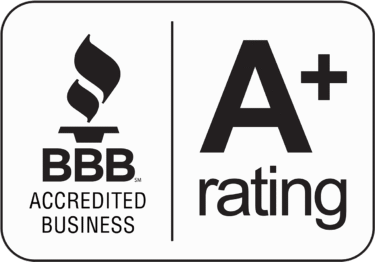Did you know that you don’t have to be a small business owner to benefit from creating a Limited Liability Company? You can establish an IRA owned LLC to give yourself “checkbook control” over your Self-Directed IRA (SDIRA) account. This means you have complete signing authority over your account, giving you direct access to your qualified funds through the LLC’s bank account. This essentially removes your SDIRA custodian as the intermediary of processing your investments.
The appeal of greater control and ease of investment may readily pique your interest; however, this autonomy places greater responsibility on the shoulders of the IRA owner. Below are some key points to help you gauge if you are a sophisticated enough investor to manage and benefit from an IRA LLC.
Advantages
As we mentioned above, one of the main benefits is that you have direct control over the qualified funds of your SDIRA. This enables you to manage your investments more quickly than if you were directing your custodian to process the investments. You can deploy funds or end investments in your own timeframe. This ability is optimal for when speed can affect the return on your investment (i.e. buying/selling cryptocurrency, or precious metals) or when you have a small window to attain the asset at a good price (i.e. purchasing a property at auction).
LLCs in general provide personal asset protection by keeping your “business” and your personal finances separate. In other words, an IRA LLC can help insulate your investment assets, limiting your personal vulnerability to potential lawsuits (i.e. divorce, tenant lawsuits, etc.). For this reason, this layer of protection makes IRA LLCs particularly popular for real estate investments. However, this method of course is not completely foolproof depending on the situation.
Other benefits include not being subject to custodian investment transaction fees (annual administration fees will still apply). Multiple IRAs, or a combination of IRAs and individuals, can own an IRA LLC (this requires special attention given to the structure and funding of the LLC).
Greater Responsibility
Even though you are investing independent of your custodian, it does not remove any of the IRS regulations and restrictions that apply to a SDIRA account. With your custodian no longer your second line of defense for double-checking the viability of your investments, ALL RESPONSIBILITY FALLS ON YOU to ensure that your SDIRA does not partake in any types of investments or prohibited transactions that could compromise and potentially disqualify the account. Even if it is unintentional, your account will lose its tax-protected IRA status, subjecting it to applicable taxes and additional penalties if they apply.
To ensure the integrity of the SDIRA account, below are some best practices and considerations for the IRA LLC owner to follow:
Best Practices:
- The IRA owner must keep the IRA LLC separate from their personal assets/companies and must maintain separate bookkeeping.
- The IRA LLC must receive all income related to the investments owned by the IRA LLC and must pay all expenses.
- All contributions to the IRA LLC bank account must be from the SDIRA via the custodian. You cannot transfer funds directly from your, or anyone else’s, personal bank account.
- All distributions to the IRA owner, including Required Minimum Distributions, must go through the SDIRA first via the custodian.
Considerations:
- You cannot utilize the IRA LLC for any investments that do not qualify as alternative investments.
- Failure to properly establish the IRA LLC could result in a prohibited transaction and disqualification of the IRA.
- The cost to set-up the LLC can be significant.
- Compensation to the IRA owner or any other disqualified person is a prohibited transaction.
- The IRA owner and other disqualified persons cannot not physically work on or live in a property owned by the IRA LLC.
- Multi-member IRA LLCs require that you file an annual partnership tax return.
- You face greater exposure to potential IRS and DOL audits.
It is also your responsibility to provide the custodian with a copy of the IRA LLC’s monthly bank statement. This will help to ensure the IRA LLC is abiding by the prohibited transaction rules and that contributions and distributions are not being made directly to and from the IRA LLC. Additionally, the IRA owner will need to define the investments owned by the IRA LLC and provide annual valuations outlining the fair market value of the investments to the custodian.
How to Establish the Checkbook IRA
The IRA LLC must be newly created; you cannot modify an already existing LLC. The IRA LLC must also be owned 100 % by the IRA and listed as such on the LLC documents. Before the custodian will fund the LLC, a properly established IRA LLC must contain and provide the following items:
- Articles of Organization with the IRA as the single member and the IRA owner or other person/company as the manager.
- Tax ID or EIN specifically established for the LLC listing the IRA as the owner.
- An Operating Agreement specifically establishing the IRA as the owner. Standard LLC Operating Agreements will not be accepted because they contain numerous clauses which would result in a prohibited transaction.
- A Subscription Agreement that outlines the amounts being invested by the IRA. These terms can also be outlined in the Operating Agreement.
- A bank account for the IRA LLC.
- An opinion letter from an attorney establishing the IRA LLC.
- An Investment Authorization & Direction form directing the Custodian to fund the IRA LLC.
Once the Custodian funds the IRA LLC there may be additional requirements by the Custodian to maintain “checkbook control”.
For the sophisticated investor, an IRA LLC can be excellent tool for certain alternative investment strategies. If you are interested in establishing checkbook control of your SDIRA, it would be prudent to seek legal advice and guidance to ensure the IRA LLC is properly established and operated.


